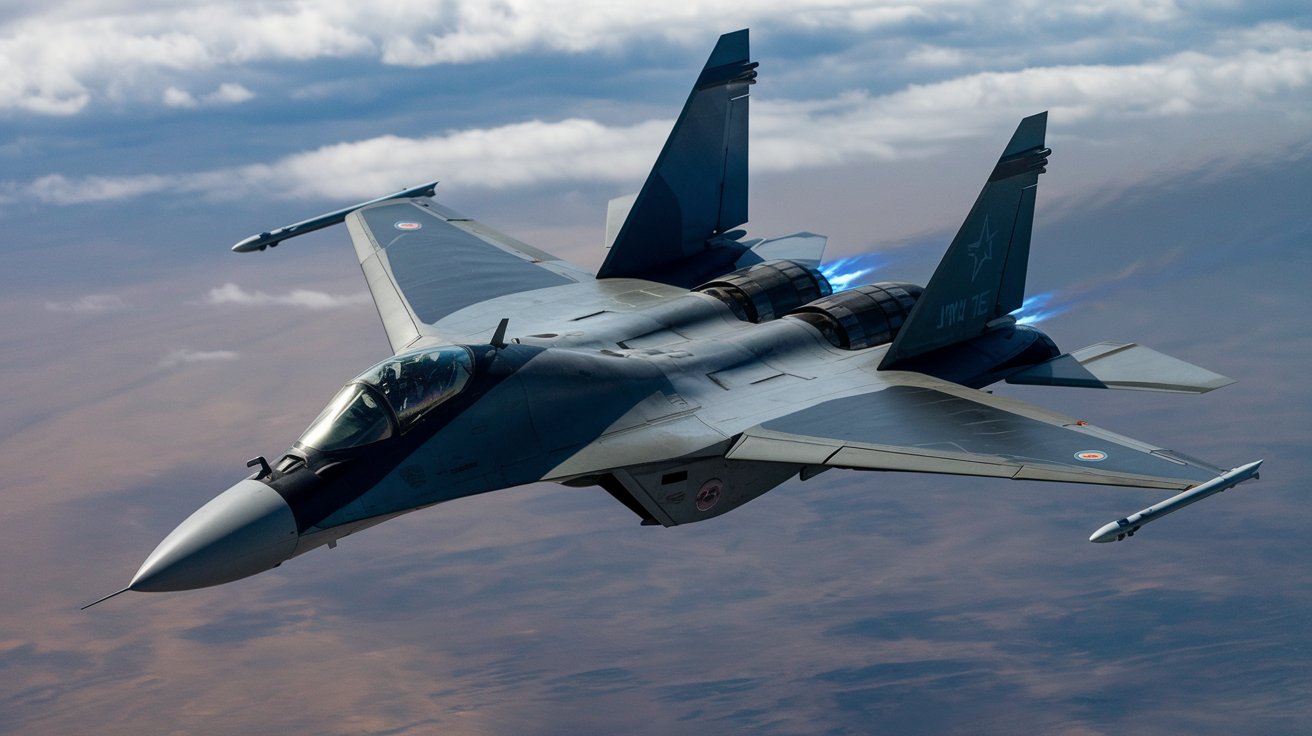The Sukhoi SU-57, Russia’s fifth-generation fighter jet, represents a significant leap in military aviation technology. Designed by the Sukhoi Design Bureau, this stealth multirole aircraft is engineered to compete with the U.S. F-22 Raptor and F-35 Lightning II. The SU-57 combines advanced avionics, stealth technology, supermaneuverability, and formidable weaponry, making it one of the most anticipated fighter jets in recent history.
In this blog, we’ll explore the SU-57’s origins, capabilities, challenges, and future and why it has become such a critical part of Russia’s military strategy.
The Origins of the SU-57
Development of the SU-57 began in the early 2000s to create a next-generation fighter jet that could dominate the skies and rival other fifth-generation aircraft globally. Russia had long recognized the need to maintain parity with Western air forces, particularly with the U.S. rapidly advancing its F-22 Raptor and F-35 programs. To address this, Sukhoi was tasked with developing a fighter to bring cutting-edge stealth technology, improved agility, and powerful weaponry into one package.
The first prototype of the SU-57 (originally known as the PAK FA or T-50) took flight in 2010. After years of testing and refinement, the aircraft entered serial production in 2019. Despite some setbacks, Russia views the SU-57 as a cornerstone of its future air force.

Key Features of the SU-57
The SU-57 has features designed to make it a formidable combat machine. Its ability to carry out air-to-air and air-to-ground missions while remaining undetected by enemy radar is a testament to its cutting-edge design. Here are some of the standout characteristics:
- Stealth Capabilities
One of the primary objectives behind the development of the SU-57 was to create an aircraft that could evade enemy radar. While not as stealthy as some Western counterparts, the SU-57 features a reduced radar cross-section thanks to its aerodynamic design and composite materials. Incorporating radar-absorbing materials helps decrease the plane’s visibility to enemy radars, making it more difficult to detect.
- Supermaneuverability
What sets the SU-57 apart from many other fighter jets is its supermaneuverability. Equipped with advanced thrust-vectoring engines, the aircraft can perform complex aerial maneuvers that would be impossible for most other jets. This gives it a distinct advantage in close-quarters dogfights, allowing it to outmaneuver opponents easily.
- Advanced Avionics
-
Weapons Systems
The SU-57 can carry various weaponry, both internally and externally.The jet can carry a combination of air-to-air and air-to-ground missiles internally, concealing them from radar until deployment. Additionally, the SU-57 can be armed with bombs and anti-ship missiles, allowing it to strike targets in the air and on the ground. Its future upgrades are expected to include hypersonic missiles, further enhancing its destructive potential.
Challenges and Criticisms of the SU-57 Program
While the SU-57 is an impressive aircraft on paper, its development has been challenging. Financial difficulties, production delays, and technological hurdles have all plagued the project since its inception.
- Production Delays
Production delays are one of the most significant issues the SU-57 program has faced.Some reports indicate that only a handful of SU-57s have been delivered to the Russian Air Force as of 2023, far fewer than initially planned.
- Engine Problems
A critical issue in the SU-57’s development has been the performance of its engines. The jet’s current engine, the AL-41F1, is a stop-gap solution, with a more powerful and efficient engine (the Izdeliye 30) still under development.
Fifth-generation aircraft are notoriously expensive to develop, and the SU-57 is no exception. These financial strains have also affected potential export sales, as countries interested in purchasing the SU-57 may be deterred by its price tag.
The Future of the SU-57
Despite its challenges, the SU-57 is still poised to play a significant role in Russia’s future military strategyPlans to upgrade the jet include next-generation avionics, improved engines, and advanced weaponry. Russia also aims to ramp up production to ensure its air force is well-equipped.
Russia has also expressed interest in exporting the SU-57 to other nations. While it has yet to achieve the same international success as the American F-35, the SU-57 has garnered interest from countries such as India and Turkey. Future export deals could help reduce the program’s financial burden while allowing other countries to benefit from its advanced capabilities.
Conclusion
The SU-57 symbolizes Russia’s ambitions in military aviation. However, the program’s ongoing development challenges and high costs remain significant hurdles. Despite these issues, the SU-57 is set to be a key player in Russia’s air force for decades to come, with future enhancements and potential export deals likely to shape its trajectory.
References:
- U.S. Department of Defense. “Comparative Analysis of Fifth-Generation Fighter Aircraft.” Retrieved from www.defense.gov
- National Interest. “Why Russia’s Su-57 Stealth Fighter Is a Game-Changer.” Retrieved from www.nationalinterest.org
- RAND Corporation. “Fifth-Generation Fighters: Technology and Tactical Implications.” Retrieved from www.rand.org
- U.S. Air Force Official Website. “Stealth Technology in Modern Warfare.” Retrieved from www.af.mil






Leave feedback about this